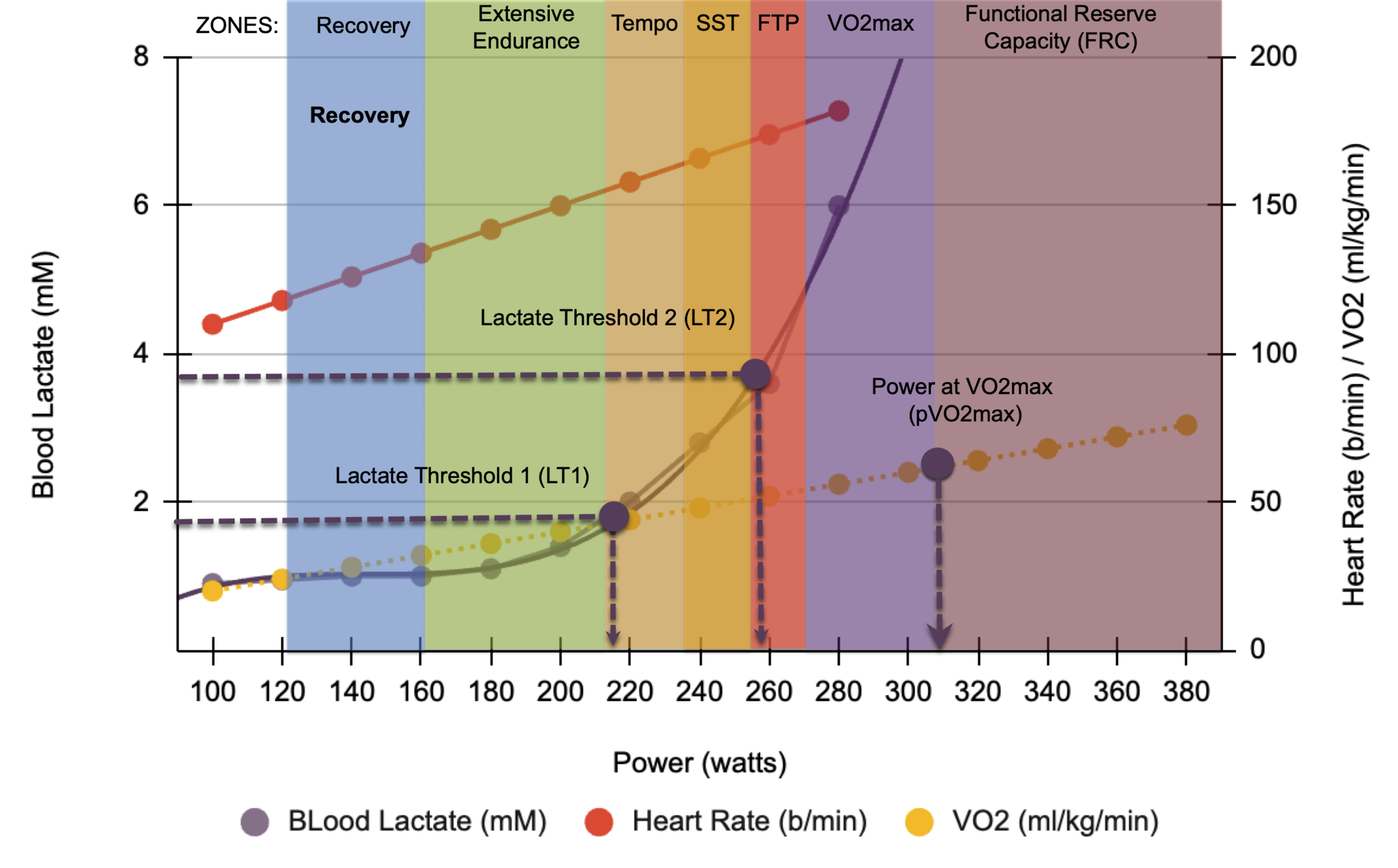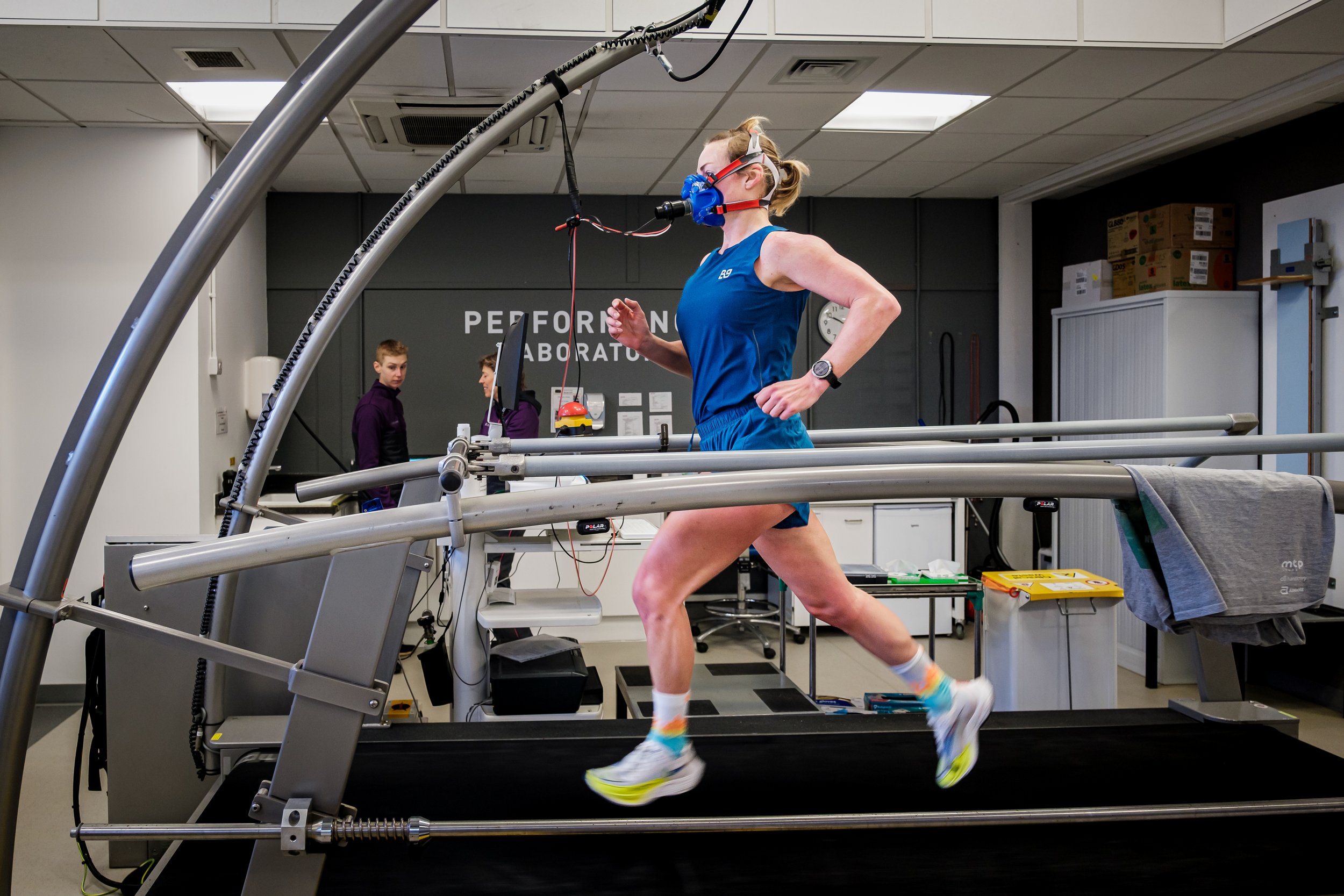
Training Zones Explained
Training Zones and Intensities
What is the difference between zones and intensity?
Zones describe a sequential range of intensities. So where one zone finishes another starts.
Intensity is a specific range of work, which may only cover part of a zone or zones.
For instance, the Tempo zone in running goes from ~88% to 94% of FTP. However a tempo run would rarely be set as low as 88%, more commonly this would be 91-94% FTP. This may sound pedantic and not a great deal of difference, however it is quite significant when performing the run.
It is for this reason you may see some zone systems include an x zone or a grey zone, as we do for this specific example.
Our zones roughly translate to the terms we use to describe the training, so an LIA run is performed predominantly in the LIA zone, but in Training Peaks there are specified intensities which may not cover the whole of the range.
In running the VO2max range stretches from 103% of FTP to 115%, this is a huge range. Long VO2max reps will be set at the lower end of this range, whilst short reps will be set at a higher percentage. Setting the session as ‘within the VO2max’ zone creates too much variation in how the sessions can be performed.
Zones are mainly used to analyse sessions, and plans over time and not to set the session.
Although much of the terminology is the same in running and cycling, the way the zones are constructed is different. A recovery bike is set at <60% FTP. If we did this in running even the fastest athletes would be walking.
Zones by Pace are very unreliable. So we don’t set them. However, for those who do want to run to pace not power see the guidelines below which show how to roughly translate power in a description to the pace you should be running at.
Cycling Training Zones and Intensities
We like to think our terms, zones and intensities are fairly straight forward. After many years of using various systems, and zones we have decided that there is far too much emphasis placed on zones, where the focus should be on getting the intensity right.
Due to the limitation of most systems like Training Peaks, there is no way of setting an LT1 which is as important an anchor point as FTP/LT2 and VO2max. If an athlete knows their LT1 or we have done some benchmark ‘guestimating’ then we may add comments to a session to more accurately reflect the intensity required. However, most sessions are either below LT1 or a good bit above.
Do not get obsessed with FTP, on any given day FTP can vary, due to all sorts of reasons. Hence the reason for intensity ranges within sessions. Nearly all sessions have a range, USE IT. Especially on the trainer. Understand the sentiment of the session, and if you feel good and its appropriate push the boundaries. If you are tired and really not sure if you can do the session in the middle of the range, start at the bottom. The range is there to be used. Completing the session at the bottom of the range on a bad day is better than trying to do it to the max, and failing on the 2nd rep.
Cycling power zones shown in the context of a blood lactate curve, with LT1, LT2 and power at VO2max identified.
Running Training Zones and Intensities
The run zone terminology is very similar to the bike, but the relative intensities are not always the same.
Running has a narrower range in which to perform. Session intensities tend to be in a narrower band, and you will soon realise that small power increases can create significantly more workload.
Due to the limitation of most systems like Training Peaks, there is no way of setting an LT1 which is as important an anchor point as FTP/LT2 and VO2max. If an athlete knows their LT1 or we have done some benchmark ‘guestimating’ then we may add comments to a session to more accurately reflect the intensity required. However, most sessions are either below LT1 or a good bit above.
Do not get obsessed with FTP, on any given day FTP can vary, due to all sorts of reasons. Hence the reason for intensity ranges within sessions. Nearly all sessions have a range, USE IT. Especially on the trainer. Understand the sentiment of the session, and if you feel good and it’s appropriate push the boundaries. If you are tired and really not sure if you can do the session in the middle of the range, start at the bottom. The range is there to be used. Completing the session at the bottom of the range on a bad day is better than trying to do it to the max, and failing on the 2nd rep. (Yes this was copied from the cycling section, however, it’s still valid and you may only have come here to read the running part).
Running power zones shown in the context of a blood lactate curve, with LT1, LT2 and power at VO2max identified.




